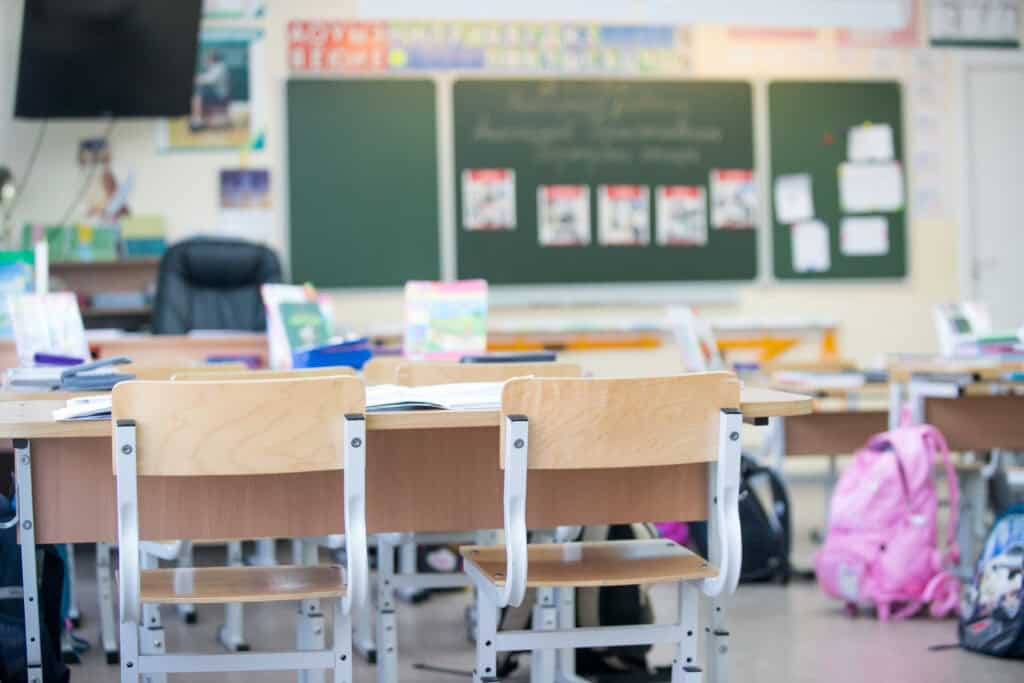Curious to know what your child will be learning throughout Year 5 English?
If you’re searching for more information on the Australian curriculum for Year 5 English, you’re on the right page!
We’re here to give you a better look into the curriculum by providing you a with a run-down of the key learning areas, achievement standards, as well as sample portfolios which highlight the type of work your child should be able to produce at the end of Year 5.
Let’s get started!
The Australian Curriculum for Year 5 English
#1: Language
#2: Literature
#3: Literacy
Sample Work Portfolios for Year 5 English
Standards for Year 5 English
Year 5 English Worksheets and Resources
Looking for English guides for other year groups?
If you have a child in a different year group to Year 5, we’ve also got guides for them! Have a look at our guides for the various year groups:
Year 1 | Year 2 | Year 3 | Year 4 | Year 6
Year 7 | Year 8 | Year 9 | Year 10
The Australian Curriculum for Year 5 English
In Year 5, the English curriculum for Australian students focusses on these three main learning areas:
- Language
- Literature
- Literacy
These three strands form a fundamental foundation for helping children to develop their knowledge and skills in listening, reading, viewing, speaking, writing and creating. Students will build on English concepts as individuals and in groups by engaging with a variety of spoken, written and multimodal texts.
Whether it’s informing children of various media texts, or teaching them complex language features, this curriculum is created to help strengthen your child’s communication skills!
Don’t forget Year 5 students will participate in NAPLAN and be tested on their English skills! NAPLAN tutoring in your home, online, or at our Hornsby tutoring campus, or Castle Hill tutoring campus can support you and your child!
#1: Language
The learning area of Language focusses on showcasing language in a variety of forms for different purposes. To begin with, students will build on their knowledge of vocabulary and spelling by exploring language variation and change over time.
Interaction
Students will also become familiar with how language is used for interaction in different cultures across varied social contexts. Your child will also understand how to take account of different perceptive and points of view, such as by learning how to specify sources of opinions and when to use the ‘impersonal it’.
Developing Their Understanding of Texts
To help gain a greater understanding of text structure and organisation, students will become familiar with the typical stages and language features of written, digital and multimedia text types. They will understand how to use the beginning of the sentence to give prominence to the message of the text.
Your child will also learn about the uses of apostrophes for possessives and common and proper nouns, as well as know how to use the organisation of texts to predict content and assist navigation.
Sentence Construction
Additionally, students will learn how to express and develop ideas by understanding how to use complex sentences consisting of a main and subordinate clause. They will learn how to use nouns and adjectives to expand on descriptions, as well as explain images in print texts and compare sequences to hyperlinked digital texts.
Children will also know how to use specific vocabulary to give greater precision of meaning to words.
Enhancing Word Knowledge
Finally, your child will focus on phonics and word knowledge to learn about suffixes and prefixes, word origins, letter patterns and spelling generalisations to spell new words. Students will explore unfamiliar plurals and understand how suffixes change the grammatical form of words.
They will also learn how to use phonetic knowledge to recognise and write unfamiliar words that share common letter patterns.
To wrap it all up, your child will learn about:
- Language variation and change over time and in different cultures
- Using language for interaction across social contexts and expressing points of view
- How text structure and organisation signal purpose and degree of formality
- Expressing and developing ideas in varied forms with greater precision of meaning
- How to use phonetic and word knowledge to understand new words
#2: Literature
Literature is all about teaching children how to identify, respond, examine, and create literature. This area starts off with teaching students how to identify aspects of literature that convey information about particular social, cultural and historical contexts.
Children will work on responding to literature by developing their own points of view and reflecting on the viewpoints of others. They will learn how to use metalanguage to give a considered interpretation of a literary text by reflecting on ideas, text structures, and language features.
Teachers will support students to examine literature by identifying how literary texts convey different viewpoints which can result in varied interpretations and responses. This includes discussing the impact of narrative voice and evaluating how a narrative point of view impacts the audience’s sympathies.
Children will also learn about sound devices and imagery in narratives, shape poetry, songs, anthems and odes, and discuss how figurative language can be used to create comparisons.
In the end, your child will learn how to create literary texts with realistic and fantasy settings and characters by using texts with computer-based graphics, animation and 2D qualities. They will also learn how to experiment with structures, ideas, and stylistic features to create new ways of communicating stories.
In summary, your child will learn how to:
- Identify aspects of social, cultural and historical contexts in literary texts
- Respond to literature by developing considered points of view
- Examine literary viewpoints, sound devices, and imagery
- Create imaginative literary texts
#3: Literacy
The final learning area to focus on for Year 5 English is Literacy. This module begins with students learning how to identify the impact of narrative voice and points of view in literary texts through vocabulary, including idiomatic expressions, and objective and subjective language.
Active Participation
Your child will learn how to interact with others by connecting ideas to their own experiences and asking questions to clarify a speaker’s meaning. Interaction skills will be built upon in pair, group, class and school speaking and listening situations to learn strategies for dialogue and discussion, such as paraphrasing and questioning.
This includes using vocabulary and sentence structures for formal and informal contexts, as well as experimenting with voice effects in formal presentations to recognise their impact on audience understanding. Students will work on planning, rehearsing and delivering presentations for specific audiences, developing their skills to sequence ideas logically and include multimodal elements for audience engagement.
Comprehension
Besides that, your child will also learn how to interpret, analyse and evaluate texts by explaining how typical text structures and language features are used to meet the purpose of the text. They will learn how to read texts to find information through techniques such as skimming and scanning, as well as identifying less familiar topics through word identification, self-monitoring and self-correcting strategies.
Students will also learn how to use research skills and comprehension strategies to analyse, surmise and link information from several sources and evaluate its relative value.
Putting Their Knowledge Into Practice
To conclude the module, students will learn how to create texts by planning, drafting and publishing a variety of texts with considerations of text structures, language features, images and sound for purpose and audience. This involves using research, text structure, vocabulary, paragraphs, and grammatical features appropriate to purpose and context to create a well-sequenced text.
They will also work on their editing skills by re-reading and editing their own work and others’ work using criteria for texts structures and language gestures. As well as developing a handwriting style that is fluent and legible, students will also use a range of software to create written texts with visual, print, and audio elements.
Ultimately, your child will learn about:
- Identifying texts in content
- Interacting with others in formal and informal situations
- Interpreting, analysing, and evaluating texts to identify the purpose of a text
- Creating texts with consideration of purpose and audience
Sample Work Portfolios for Year 5 English
For a better understanding of what kinds of tasks and at what level your child may have to perform, take a look at these sample portfolios:
Year 5 English Achievement Standards
Here’s a dot point summary of the milestones your child is expected to achieve by the end of their Year 5 period:
Listening, reading and viewing:
- Explain how text structures assist in textual understanding
- Understand how language features, images, and vocabulary influence interpretations of characters, settings and events.
- Decode unfamiliar words using phonic, grammatical, semantic and contextual knowledge
- Analyse and explain literal and implied information
- Describe depictions of events, characters and settings in texts
- Listen and ask questions to clarify content.
Speaking, writing and creating:
- Show how ideas can be extended through language features
- Develop and explain a point of view about a text
- Create imaginative, informative and persuasive texts
- Make multimodal presentations
- Contribute actively to class and group discussions
- Use a variety of sentence types
- Use accurate spelling, punctuation and specific vocabulary
- Understand how to edit work for structure and meaning
Year 5 English Worksheets and Resources
Wondering where you can find English worksheets and other resources for Year 5 students? You’ve come to the right place!
Spelling Worksheets
No matter what year of study your child is completing, spelling is an essential skill they’ll need to develop in order to communicate effectively.
We’ve put together a number of spelling lists that your child can use to practise — check them out below:
Download Printable Year 5 Spelling Words Worksheets
Punctuation Worksheets
Throughout Year 5 English, the main concepts of punctuation that your child will be focussing on are colons, semicolons, parentheses and dialogue.
We’ve created a range of worksheets highlighting the uses of these types of punctuation which you can download for free below:
Download Printable Year 5 Punctuation Worksheets
Reading Lists
Outside of the reading your child does in class, they can engage in some reading at home too. We’ve compiled a list of books recommended by NESA and categorised them under:
- Australian Literature
- Insights about the Peoples and Cultures of Asia
- Literary Texts from Other Countries and Time
Browse through the reading list below:
Year 5 Recommended Reading List: Best Books for 9 and 10 Year Olds
NAPLAN
Your child will also be completing their NAPLAN for the second time! Unsure of what your child will be assessed on?
Find out everything you need to know about the Year 5 NAPLAN below:
A Guide To The Year 5 NAPLAN For Parents
Looking for some extra help for your child with Year 5 English?
We have an incredible team of English tutors and mentors!
We offer tutoring and mentoring for students in Years K-12 in a variety of subjects, with personalised lessons conducted one-on-one in your home, in Penrith or other suburbs in Sydney, online or at one of our state of the art campuses in Hornsby or the Hills! Find your perfect North Shore English tutor ASAP!
If you are based in Queensland, we also offer English tutoring in Brisbane.
We’ve supported over 8,000 students over the last 11 years, and on average our students score mark improvements of over 20%!
Looking for some extra English support in Brisbane? Check out our Brisbane primary English tutoring by getting in touch today!
To find out more and get started with an inspirational English tutor and mentor, get in touch today or give us a ring on 1300 267 888!
Ashley Sullivan is a Content Writer for Art of Smart Education and is currently undertaking a double degree in Communications (Journalism) and a Bachelor of Laws at UTS. Ashley’s articles have been published in UTS Vertigo and Central News. She is a film, fashion and fiction enthusiast who enjoys learning about philosophy, psychology, and unsolved mysteries in her spare time.






